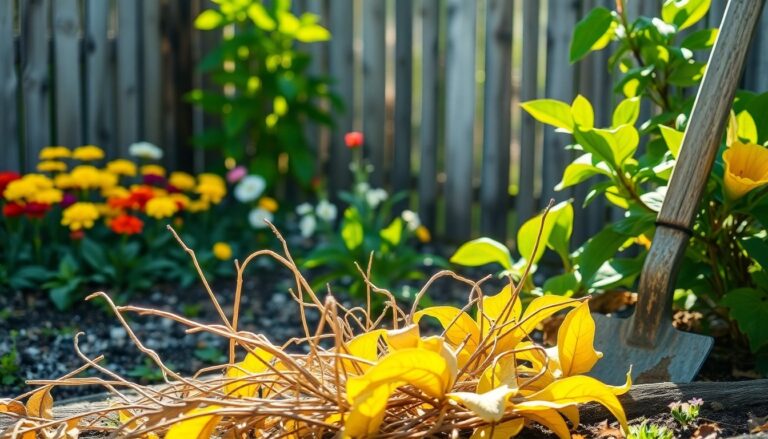Argomenti trattati
In the realm of gardening, a common dilemma arises: should you clear out dead plants from your garden beds or leave them in place? This question often stirs debate among both novice and seasoned gardeners. To shed light on this topic, we consulted an experienced gardener who shared valuable insights on the matter.
The impact of dead plants on your garden
When considering whether to remove dead plants, it’s essential to evaluate their impact on the ecosystem. Dead foliage can serve multiple purposes in your garden. For instance, it may provide shelter for beneficial creatures such as ladybugs and earthworms, which contribute positively to your garden’s health. Leaving some dead plant matter can create a habitat that supports biodiversity.
Advantages of leaving dead plants
One significant advantage of allowing dead plants to remain in your garden is the natural process of decomposition. As dead plants break down, they release nutrients back into the soil, enriching it for future plant growth. This process acts as a natural fertilizer, facilitating the thriving of new plants. Additionally, dead plants can function as a windbreak, protecting more delicate species from harsh weather conditions.
Moreover, maintaining some dead plant matter can assist in controlling soil erosion. The roots of these plants stabilize the soil, preventing it from washing away during heavy rains. This is particularly crucial in areas prone to erosion, where vegetation plays a vital role in maintaining the landscape.
When to consider removing dead plants
Despite the benefits of leaving dead plants in place, certain circumstances may necessitate their removal. For example, if deceased plants harbor pests or diseases, their removal can prevent the spread of these issues to healthy plants. Fungal infections and insect infestations can thrive in decaying matter, posing a risk to your garden’s overall health.
Signs that indicate removal is necessary
Gardeners should remain vigilant and look for warning signs that suggest it’s time to clear out dead plants. An increase in pests, such as aphids or spider mites, may result from the presence of dead plant material. Additionally, if you observe signs of disease, such as wilting or discoloration in nearby healthy plants, it’s wise to remove the dead plants promptly.
Another factor to consider is the aesthetic appeal of your garden. While some may appreciate the rustic look of decaying plants, others prefer a tidy and well-maintained garden space. If you are preparing for an event or simply wish to enhance the visual attractiveness of your garden, removing dead plants might be the best course of action.
Finding a balanced approach
Deciding whether to remove or retain dead plants can be challenging, but striking a balance is key. A thoughtful approach might involve selectively removing certain plants while retaining others that offer ecological benefits. By doing this, you can promote a healthy garden environment while keeping it visually appealing.
Additionally, consider practicing composting as a way to manage dead plant material. Instead of discarding them entirely, composting allows you to recycle nutrients and create rich soil for future planting. This eco-friendly solution can provide a win-win scenario for your garden.
The decision to remove or leave dead plants in your garden is multifaceted, encompassing both ecological and aesthetic considerations. By being attuned to the needs of your garden and observing the signs it presents, you can make informed choices that foster a thriving and beautiful space.

